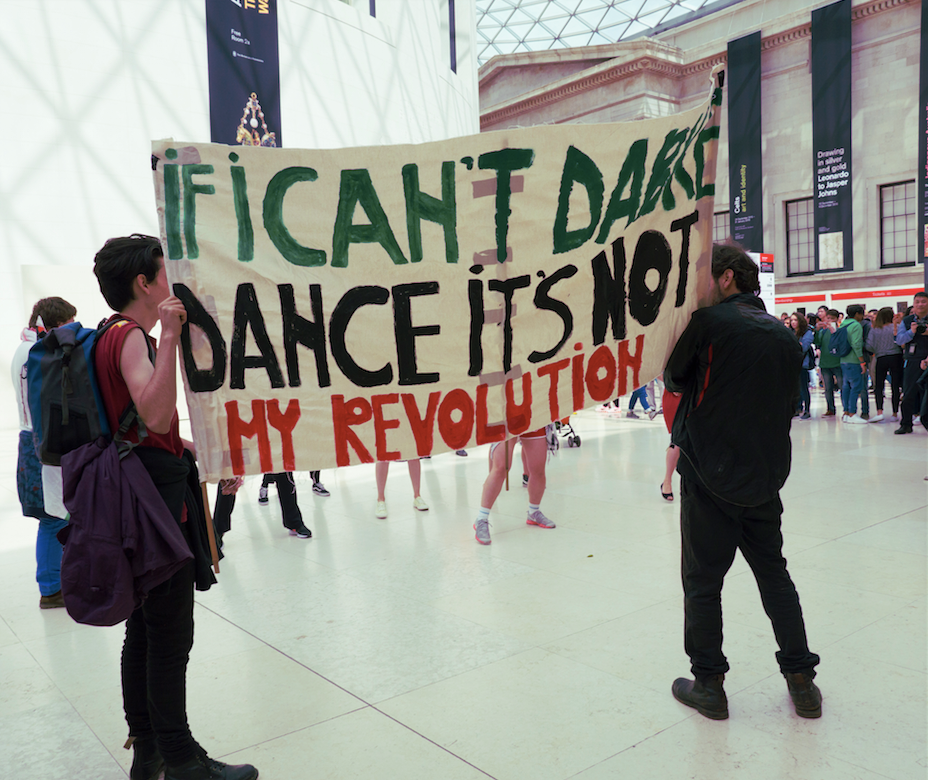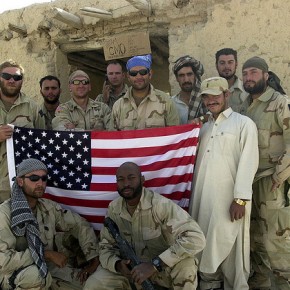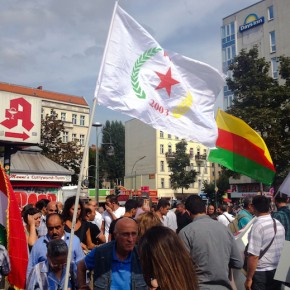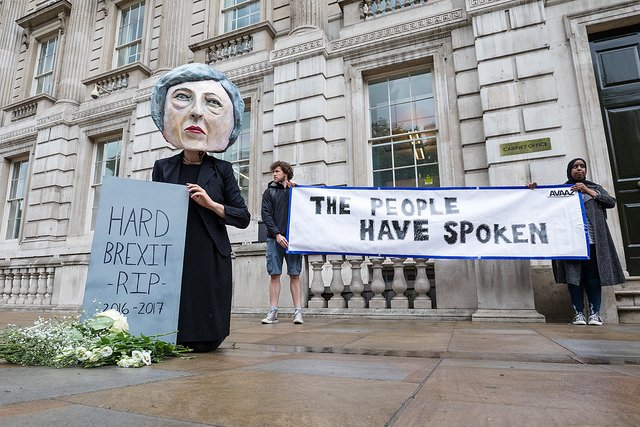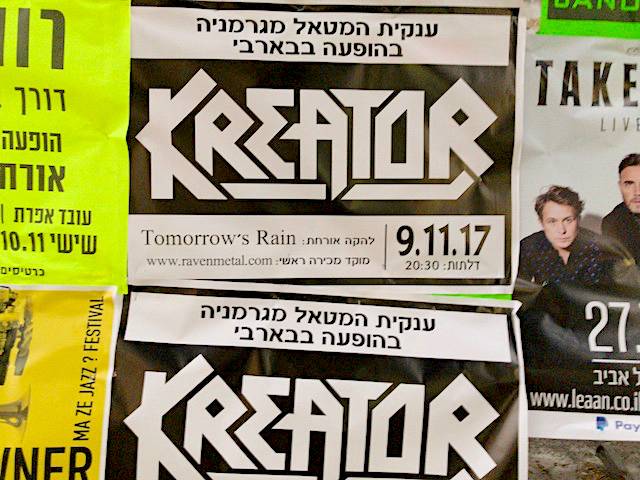“If I can’t dabke dance, it’s not my revolution.” We paint these words in the colours of our favourite flag on a white canvas, the banner for our flashmob in the British Museum on the first anniversary of Operation Protective Edge, in Gaza.
The pouring rain is making us even more nostalgic and we remember how powerful it felt to be part of last year’s demonstration in London, when more than 150,000 people marched. In the spirit of that march, we plan and execute our action, which took place inside the heart of the British Museum and in a Central London Barclays Bank on Tottenham Court Road.
The British Museum was highlighted because it is a symbol of colonialism, and Britain’s role in the Zionist project has been well-documented. Barclays was targeted as it is a named shareholder in several major arms firms including Raytheon, Boeing, and Lockheed Martin, all of which play an important role in arming the Israeli military.

Images of Palestinian topics in the media are largely dominated by destruction, blood, pain, and terror. Palestinians are often depicted as Islamists, terrorists, savages, or poor, helpless war victims. Their homes are shown as slums and ruins, with images of walled-off land. Such caricatures are often perpetuated by British news outlets.

Therefore it is highly relevant to protest culture with culture, and stand up against cultural dominance and appropriation by demonstrating an alternative, and showing that the Palestinian spirit is not broken. As Mohammed Omer said in a recent article, “We are still here, rebuilding as best we can, sleeping as best as we are allowed, because we intend to stay, as much as others may want us gone.”
We also dance to express our concern that one of effects of the UK’s Prevent Strategy has been that Palestine-related activism is effectively under surveillance. Individual freedoms are under attack, activists are harassed, and school children who express support for Palestine are increasingly referred to counter-radicalisation programmes.

The Dabke is an Arab dance that originated in the ancient Levant. It is believed to have been used to scare evil forces away from crops. This accounts for its rhythmic jumps. It is a celebratory dance, though in Palestine, it has been politicized since the Nakba, in 1948.
Israeli performance artists have been increasingly erasing the Palestinian character of the dance, through a policy of cultural appropriation alongside deliberate erasure of Palestinian culture. For instance, New York-based Israeli choreographer Zvi Gotheiner (ZviDance) has taken on the Dabke, without adequately reflecting its Palestinian influences. In June 2012, when the New York Times covered “Israeli Dabke,” Arab Palestinian culture wasn’t mentioned at all, once again denying their existence and history in the land.
As Roger Sheety argues, this cultural appropriation is a “political policy of the state that seeks to erase Palestine from historical memory, particularly within Western discourse.”

London Palestine Action uses the Dabke in direct action to support the boycotting of Israeli products in supermarkets and beauty stores, while other groups have highlighted arms trading and organised demonstrations against apartheid. It is supported by Al Zaytouna Dance Theatre, a Palestinian dance group in London that uses the Dabke in its traditional form, but also fuses it with contemporary dance and visual arts. Choreographers like les ballets C de la B, and Hildegard De Vuyst regularly collaborate with Palestinian performers, resulting in dance forms like the Dabke used in their production Badke.
It is our desire to commemorate the brutality of Israel’s offensive in Gaza last summer, but we also want to change the narrative. As Khalid Qatamish, the Director of El Funoun Music and Dance Ensemble mentions, “the dance is not only a sacred tradition; it is very much tied to dreams of liberation.” We will be back to dance the dabke with our friends from Stop the Arms Fair at the horrific DSEi arms fair on 7 September 2015.
Photographs courtesy of Levi Hinds.
